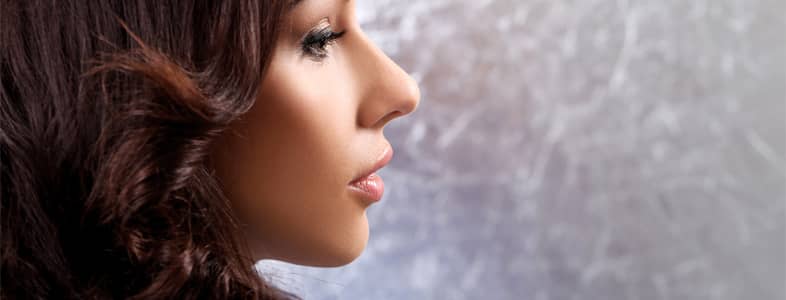
What Is Polly Beak Deformity?
The Polly Beak deformity results from the incomplete removal of a dorsal hump, or bump, on the nose. The initial surgery also involves shortening the bridge of the nose. If the surgeon does not remove all the excess cartilage and bone from the entire length of the nose in the first surgery, the nose’s area just above the tip, known as the supratip, swells and becomes the highest point on the nose when seen in profile. This gives the appearance of a nose shaped like a parrot beak, leading to Polly Beak deformity. In some other cases, the patient may have a very large supratip due to an overly prominent nasal tip. Excessive scarring or a droopy nasal tip can also lead to Polly Beak deformity.
Correcting a Pollybeak Deformity
There are two basic methods for correcting a Polly Beak deformity. If the deformity is due to excess cartilage, steroid injections may help reduce swelling in the early stages of the condition. Other causes for the deformity will have to be corrected with second revision surgery. This may involve taking down more of the cartilage, bone, or scar tissue. It may also require a cartilage graft to shore up either the bridge or the tip of the nose. Grafts are generally taken from behind the ear so as not to be noticeable.
Revision Rhinoplasty Surgical Procedure
This procedure, like an original rhinoplasty, must be done under general anesthesia. Patients should expect many of the same side effects and recovery times as with their first procedure. The most common side effects will be bruising and swelling. These can be reduced with the use of ice, cold compresses, and the herb Arnica montana.
Most of the bruising and swelling should subside within two weeks of the surgery, but the nose’s final shape may not become apparent until two to three months after the revision rhinoplasty. Patients should resume normal activities, such as driving and going to work or school, within a week after surgery.
The key to any revision cosmetic surgery, including correction for a Polly Beak, is working closely with the cosmetic surgeon to understand the patient’s desired outcome and determine how best to achieve it. Patients may be nervous about undergoing a second cosmetic procedure after being disappointed in the first one. However, in a surgeon’s hands trained specifically in revision rhinoplasty, patients can finally have the nose they originally wanted.
*The content in this blog is developed to spread the awareness towards plastic surgery. Our blog is not intended to serve as a replacement for an actual in-office consultation with Dr. Marin. As such, the information within this blog reflects the unique cases of our individual patients.
Comments are closed here.